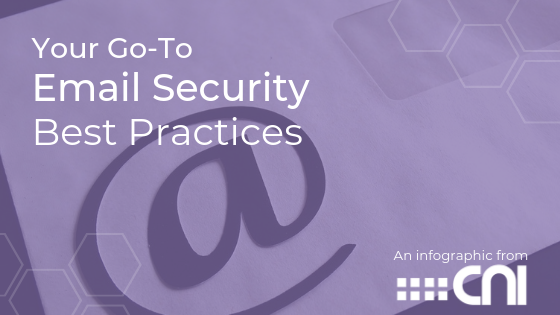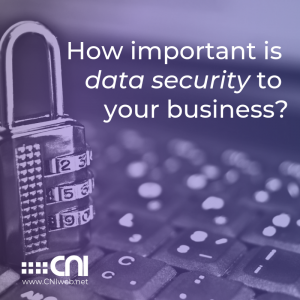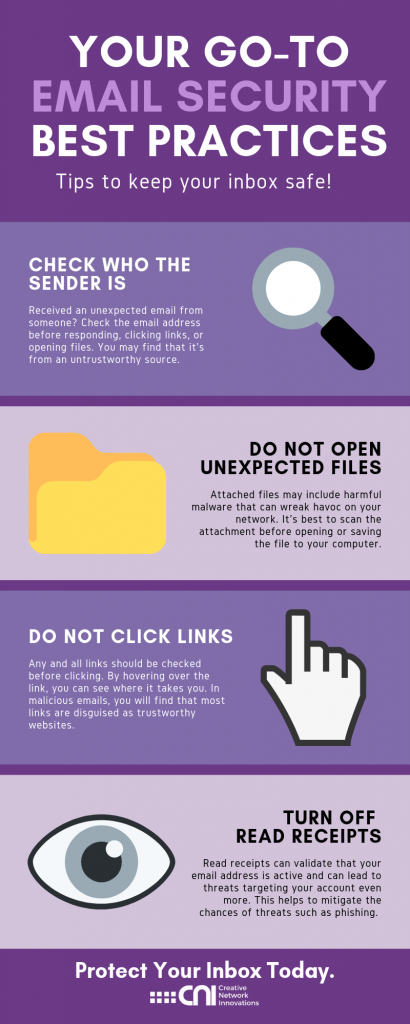Email has become an essential part of everyday life for just about everyone. For some people, checking their inbox is the first part of their morning routine. Most of us check our email over a dozen times each day. To put it simply, email has revolutionized the way that we communicate with each other, and this is why email security is very important.
Even though email has become such a large part of our lives, most of us don’t fully grasp how vulnerable our inbox truly is. Nearly 92% of malware is still delivered by email according to Verizon’s 2018 Data Breach Investigations report. Online threats take advantage of the ease of use and utilize email as a direct line to employees. When businesses treat email security as a low priority, they’re putting themselves at a huge risk. The following threats can be used to access business-critical data through email:
Fear not though! With some very simple best practices, employees can protect their inbox from malicious threats. Check out our infographic below to learn some quick tips:
Your Go-To Email Security Best Practices
Check Who Sent the Email
If you happen to receive an unexpected email from a fellow employee or even an executive, it’s in your best interest to check the sender’s email address. Threats can get pretty crafty. Sometimes even replicating email addresses to look identical to your company’s.
For example: Your email address may look like this -> example@yourcompany.com and the threat’s email address may look like this -> example@y0urc0mpany.com
Do Not Open Unexpected Files
Before opening any attachment, an email security best practice is to scan attached files for any threats. Malicious programs can be embedded into the document that, when opened, will begin working immediately. Most modern email providers either automatically scan or offer the ability to scan emails before opening.
Do Not Click Links
Similar to unexpected files, suspicious links pose a major threat to your email security. Malicious links can be disguised to look like they would direct you towards a trustworthy website, but that’s not the case. In order to protect yourself, it’s in your best interest to hover over links. This allows for users to see exactly where that link is directed. Here’s an example:

Turn Off Read Receipts
Read receipts allow for the sender to be notified that the recipient has opened the email. This comes in handy when you’re working on time-sensitive projects or hoping to get a response from someone within a specific time-frame. However, read receipts can notify online threats that your email address is active. This is the threats “green light” to start targeting you even more.
All in all, employee inboxes jeopardize your business’s cybersecurity. From phishing to key loggers, there is an abundance of threats that we should all keep an eye out for. We all make mistakes from time to time, but there is hope. Implementing some email security best practices into your daily routine can make a huge impact.
Feel like your business could benefit from a boost in email security? Reach out to Creative Network Innovations today, and we’ll help to identify weak spots in your IT strategy. We work with an array of businesses in the Central Florida regions with our services including:
Security Awareness Training
Penetration Testing
IT Audits & Assessments
Cybersecurity Consulting
& so much more!
Reach out today to start protecting your inbox!



